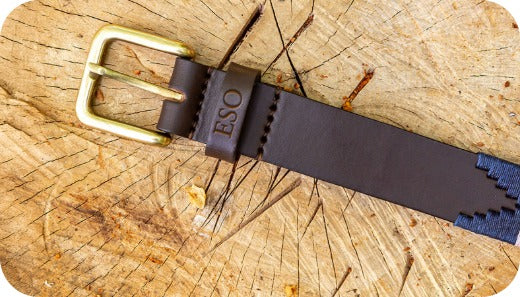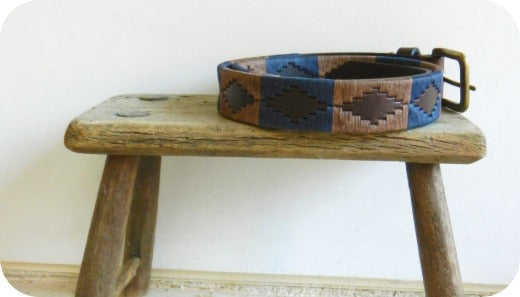In a world driven by low prices and high turnover, France has drawn a line in the sand. The newly passed legislation targeting ultra-fast fashion, aimed squarely at platforms like Shein and Temu, signals not just a regulatory shift, but a deeper cultural one.
By banning advertising for ultra-fast fashion, implementing eco-contributions on cheaply made clothing, and rewarding repair over replacement, France isn’t just going after polluters; it’s asking consumers to rethink how they buy clothes.
Could this bold move truly change how shoppers shop? And could it, spark a revival of slower, craft-centred fashion that has long been pushed to the margins?
What does the French law on fast fashion say?
The new French law against fast fashion introduces several powerful reforms, each designed to hit fast fashion where it hurts most: profit through speed and disposability.
-
Advertising bans: France will prohibit advertising from ultra-fast fashion brands that release more than a certain number of new items per day, a definition that fits Shein and similar platforms. This could dramatically reduce their influence on trend cycles, particularly among youth on platforms like TikTok and Instagram.
-
Eco-contributions: Starting in 2025, ultra-fast fashion brands will pay a fee of €5 per garment sold, gradually increasing to €10 by 2030. These funds will be channelled into sustainability efforts, like repair initiatives, textile recycling, and education campaigns about mindful consumption.
-
Circular incentives: The law supports the reuse economy by funding services like textile mending, repair bonuses, and circular retail infrastructure. It also plans to launch a “repairability index” for clothing, like what already exists for electronics.
This represents a major philosophical pivot. For the first time, government regulation is being used to slow down overconsumption.
What about the rest of Europe?
France may be the first mover, but it likely won’t be the last. The European Union is already working on broader policy frameworks, for instance, the Eco Design for Sustainable Products Regulation (ESPR), which aims to reshape how clothing is designed, produced, and consumed across the continent.
Countries like Ireland are considering similar advertising bans and eco-contributions. Meanwhile, the EU is developing a Digital Product Passport, which will help consumers understand the environmental and social impact of every item they buy.
France’s leadership here is significant. If this legislation proves popular and effective, it could be used as a blueprint for broader reform in the UK and worldwide.
The real cost of fast fashion
The environmental and social toll of fast fashion is staggering. It’s a system built for speed and deliberate disposable use. The following infographic shows a snapshot of the cost of fast fashion on our planet.

A Cultural Shift in the Making
Fashion isn’t just about clothes; it’s about identity, belonging, and the stories we tell ourselves about who we are. For decades, fast fashion has made it easy (and cheap) to buy into constantly shifting trends. The cost? Environmental destruction, labour exploitation, and a collective addiction to novelty over need.
France’s law invites consumers to re-evaluate their habits. It doesn’t ban cheap fashion outright, but it disincentivises the systems that enable overconsumption. Without constant ads and social media influencer promotions, consumers may be less tempted to impulse-buy low-quality clothing that’s discarded after one season or one wear.
If this works, it could encourage a shift toward more intentional, sustainable purchasing behaviour, where people value quality, craftsmanship, and longevity over novelty.

Image: pampeano’s sustainable packaging can be recycled by customers as pen holders, shopping bags, and more
What this could mean for artisanal brands: Is it craftsmanship’s moment to shine?
In the shadow of mass-produced, ultra-fast fashion, craftsmanship has often been treated as a luxury: rare and niche. But as France redraws the rules of the game, what once seemed niche may soon become the new normal.
The fashion reform doesn't directly promote artisanal businesses, but it restructures the system in a way that finally favours their strengths:
1. Longevity is now a design choice
Fast fashion thrives on planned obsolescence. Items are designed to fall apart after a few wears. In contrast, handcrafted garments and accessories are built to last. Whether it’s a handwoven wool coat, vegetable-tanned leather belt, or hand-stitched espadrille, the materials and techniques used in craft fashion age beautifully rather than break down quickly.
Under France’s new model, durability is a value driver, and consumers are being educated and incentivised to recognise that.
2. Cultural heritage finds new support
There’s a broader cultural opportunity at play: craftsmanship not only supports sustainability but also preserves heritage. Whether it’s French ateliers creating linen garments, Italian cobblers hand-making shoes, or South American artisans crafting leather goods, these practices root fashion in people, place, and purpose.
Take pampeano’s iconic belts, for example. Each belt features the Aztec-inspired pampa diamond, a traditional Argentinian symbol representing the Andes rising above the pampas. These pampa diamonds are hand-stitched by master artisans, creating a single belt that can take up to five hours, reflecting a deep respect for time-honoured skills. These patterns— once passed down through generations— are more than decorative; they carry cultural meaning that wearers can connect with and feel proud to represent.
In a world increasingly accustomed to fast consumption and instant production, brands like pampeano offer something different: a sense of individuality, connection, and authenticity. By preserving these handcrafted traditions, they stand in contrast to the uniformity and disposability of mass-market fashion.

Image: a skilled artisan crafting the pampa diamond by hand
3. Artisan brands can compete on value, not volume
Ultra-fast fashion companies dominate through low prices and scale. Artisan brands, by contrast, compete on value per item and the experience of wearing something well-made. For instance, pampeano’s artisanal leather accessories are made from vegetable-tanned leather, a slow, natural process that takes 4 to 8 weeks.
Unlike the quick chemical tanning used in mass-produced leather goods, vegetable tanning uses plant-based tannins, producing leather that’s not only more durable and environmentally friendly but also develops a unique patina over time.
Wearing a pampeano bracelet or carrying a pampeano wallet is more than just accessorising, it’s choosing an object that carries tradition, sustainability, and individuality. It’s a conscious rejection of disposable fashion in favour of something that truly lasts and tells a story.
France’s penalties on fast fashion and limits on advertising begin to level the playing field for artisanal brands worldwide. A consumer who once bought 10 bags for £10 each may start to see the rationale of buying one well-made, handcrafted bag for £100 that lasts for years.
4. Repair culture aligns perfectly with craft
One of the most exciting aspects of France’s reform is its support for clothing repair, including a state-funded “repair bonus” and a future repairability index for textiles. This shift invites consumers to view clothing not as disposable but as maintainable.
For craft-focused brands, this is a major tailwind. Many brands like pampeano, Nudie Jeans, and Filson already offer repair services and product care guides to help customers fix their items instead of discarding them. Brands that design with repairability in mind (for example, replaceable buttons, restitchable seams, timeless cuts) are now rewarded.
So, what doesn’t count as fast fashion?
1. Slow Fashion Brands
These brands produce intentionally and infrequently, focus on quality materials, and often publish transparent sustainability reports.
2. Artisan and Heritage Labels
These brands work with skilled craftspeople or preserve traditional techniques, often with deep cultural or regional roots.

Image: pampeano’s artisanal travel accessories featuring the iconic Aztec-inspired pampa diamond
3. Repairable and Circular Brands
These brands promote longevity through care and repair, offering in-house fixes or repair partnerships. For example, pampeano offers a lifetime repair service for its leather belts and leather dog accessories.
4. Made-to-Order or Pre-Order Models
These brands only produce what customers order, drastically reducing overproduction and deadstock.
5. Upcycled and Second-hand Platforms
These businesses encourage reuse and upcycling rather than new production.
Back to slow: from the consumers’ perspective
Here’s how shoppers can make the most of this moment:
-
Choosing less, choosing well: Instead of chasing trends, invest in versatile, high-quality garments that last.
-
Support repair: Make use of repair bonuses and local tailors to extend the life of your clothes.
-
Ask questions: Who made this? What is it made from? How long will it last? Brands that can’t answer probably don’t deserve your money.
Most importantly, consumers can reframe their mindset. Fashion can still be joyful, expressive, and fun, but it doesn’t have to be disposable.
From cost to worth: a shift from fast fashion to artisanal brands
France’s fashion reform is a bold attempt to shift the needle, not just on environmental standards, but on the culture of consumption itself. It challenges fast fashion’s race to the bottom and opens the door for something better: a fashion future where craft matters, artisans matter, and stories matter.
If consumers, governments, and brands rise to meet this moment, France’s law could do more than clean up closets; it could redefine the fashion industry from the inside out.





